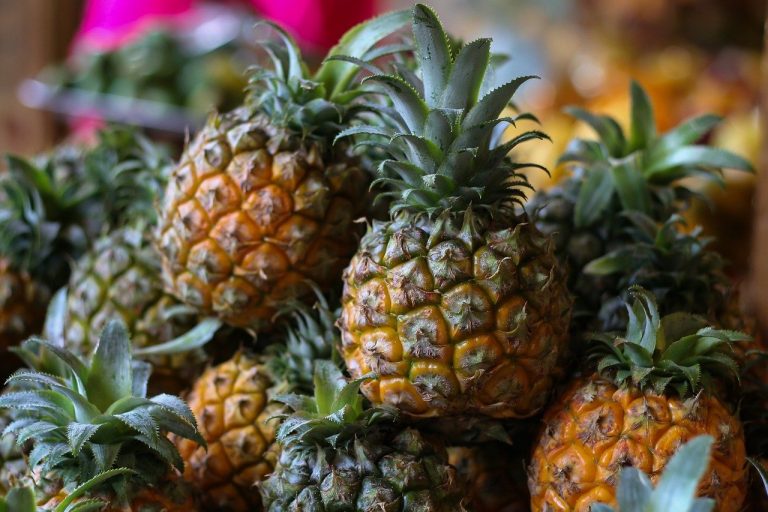This nutrition filled plant can be grown in your own house.
If you’re a staunch supporter of “farm to table,” pull up a chair to your garden. It is fascinating to see how flowers and seeds turn into fruits, and the emotions it brings!
Mixed feelings of achievement & motherly love for those baby greens is what gushes right in. It is a regular process of experimenting & learning with plants.
To know more about planting, we need to understand the sowing & growing of each plant. The Pineapple plant noted in NASA studies to improve the air quality around. It is a part of the Bromeliad family. This herbaceous perennial has long sword-like leaves growing in a spiral around a central stem. Each pineapple plant will produce one flower stalk and, consequently, one pineapple fruit.
Loaded with nutrients, Pineapples are one of the best disease resistant anti-oxidants.
In fact, it tops the list of most low maintenance plants.The soil was prepared. Homegrown compost was created. Pineapples were grown!
To keep producing edible fruit and pretend you’re on the island of Hawaii while doing it, follow these instructions for a bountiful harvest for years to come!
STEP 1:
Choose an evenly ripped Pineapple for your stock of fruits. Make sure it has a healthy set of leaves on top. Separate the stalk from the fruit by twisting it. A small piece of pulp will ooze out with the stalk. Pull out the lower leaves from the stalk so that it is ready to immerse in soil. Keep the stalk aside for 2-3 days, allowing the pulp to dry.
Note: If you directly plant it, there are fair chances for the stalk to rot or die.
STEP 2:
After drying the stalk after 3 days, immerse it in a glass of tap water with the stalk being fully immersed. Set it aside for a week.
STEP 3:
After a week, you will see the roots protruding out from the stalk. When the roots are long enough to be planted, take a pot with drainage holes for the stalk to breathe. Pineapples need a free draining soil so take a potting mix consisting of cocopeat, organic compost, stones, pebbles & soil. Thoroughly mix it and plant the stalk about 2-3 inches deep.
Note: Pineapples do not require big pots as they do not have a big root system.
STEP 4:
Water your plant to get soaked and allow germination. Set it out in sunlight for about 1-2 months for its initial growth. Scorching heat can adversely affect the plant.
STEP 5:
Never forget the soil check! Make sure it is neither too dry nor too wet. Excessive watering and exposure to sunlight can turn your Pineapple plants to turn reddish brown and eventually die. To have a healthy, ripe and lush green Pineapple plant, a temperature of 30*C is considered ideal.
STEP 6:
In about 8 months, a flower grows on the plant which eventually grows into a full-grown fruit in a year or so. A visible yellow green covering shows that the plant is growing to be a fruitful one. Wait for the fruit to ripe fully and then harvest it.
What a fun way to enjoy a bountiful harvest!
We hope you can try this DIY at home and see how it works for you.






















